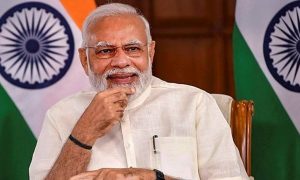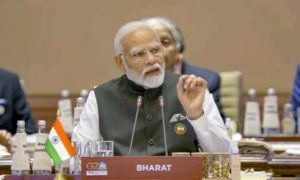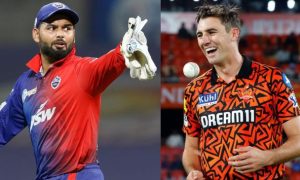Russia is not the only “riddle wrapped in a mystery inside an enigma”. For many, the Rashtriya Swayamsevak Sangh (RSS) and Prime Minister Narendra Modi also fit Churchill’s description of Russia. So, analysts tend to interpret both (Modi and the RSS) according to the convenience of their own perceptions. This happened after Mohan Bhagwat’s outreach to Delhi’s elite on 17, 18 and 19 September. Bhagwat espoused the RSS’ idea of India and spoke about Muslims, Hindutva, the Congress and caste divisions in India. His assertions were seen either as a radical departure from the “RSS position” or as an attempt to rein in Modi and reaffirm the RSS’ position as the ideological mentor of the Parivar. This three-part series will attempt to unwrap the mystery that is sought to be created around the RSS and its relations with the BJP. More importantly, it will show how Modi’s politics is not delinked from the RSS’ concept of nation-building. This is the second part of the series.
In the post emergency phase, the Rashtriya Swayamsevak Sangh (RSS) was accused of being run by largely Brahmins and upper castes; that it is significantly biased against backward and Scheduled Castes.This allegation was liberally levelled largely by the socialists who found the Sangh steadfastly refusing to play second fiddle to their politics.
Though the issue of dual-membership (being part of the Janata Party while continuing their allegiance to the RSS) emanated, to a great extent, from the inability of a group of socialist leaders’ to make the RSS amenable to their designs, RSS chief Balasahab Deoras hit back with facts. He released a list of RSS senior leaders who belonged to various caste groups across the country while pointing out that socialist formations, in fact, were led largely by Brahmin leaders. In the 1970s, the RSS had drafted a large number of socially and economically marginalised sections into its fold.
The emergence of many OBC leaders as icons of the Hindutva was not an overnight development. Prime Minister Narendra Modi’s emergence as the tallest Hindutva leader coming from backward class is not a freak accident. It is consistent with the history of the RSS and its efforts to forge a Hindutva force subsuming all castes. It will be naïve to drive a caste wedge within the Sangh Parivar on the basis of Dalits versus upper castes or OBCs. Far from creating internal frictions, the Sangh will emerge much stronger should there be a Dalit Hindutva icon like Modi. Given the radical transformation within the Sangh Parivar’s cadre base, such a probability is not far fetched.
The understanding about the RSS and its various constituents is marked by serious intellectual deficit. The saffron family is seen in a typical binary which either valorises or vilifies it. It is not that there were no serious studies on the RSS and its constituents, it is just that the right messages have not been derived from the same. Take for example, the brilliant study of the RSS in 1951 by American scholar JA Curran Jr. Curran presciently observed, “It is popularly believed that the Sangh will, in the event of gaining power, automatically support vested interests — capitalistS, landlords and others. The author considers that, while a number of RSS sympathisers and supporters, particularly those in the group just described, look to the Sangh as potential guardian of their specific interests, there is no pronounced enthusiasm among most swayamsevaks for any such role. Despite the lack of formal economic programme, there is a strong vein in the Sangh ranks of what might be called Hindu socialism.”
This study was carried out much before the RSS’s political arm — the Bharatiya Jana Sangh (BJS), which later became the BJP — was born.
Subsequent events proved Curran’s prognosis about the Sangh’s politics right. For instance, the BJS pitched not only for the abolition jamindari and the privy purse much against the general impression that the party would side with the liberal and open economy. It suffered electoral setbacks for this stance. In terms of economic agenda, the Swatantra Party (formed by C Rajagopalachari in 1959) offered a more cogent response to the Congress than the RSS-BJS combine. Deendayal Upadhyay’s “integral humanism” was considered a muddled up response to the Congress’ gradual drift towards socialism.
Till 1967 when the BJS forged an alliance with the socialists, the Swatantra Party and hardliners like the Hindu Mahasabha and the Ram Rajya Parishad, it kept on changing its goalposts and adapted itself to changing circumstances. Yet, the underlying theme of all these efforts was a larger cause of consolidation of the Hindu society. This ideal ran contrary to the dominant Nehruvian political narrative of those times, secularism earning the RSS-BJS the “communal” tag. But what is significant is the refusal of the Sangh Parivar to be guided by a doctrinaire approach to Hindutva which was akin to adhering to Brahminism. This flexibility was retained only to accommodate various social groups within the Hindus that follow rituals different — and sometimes even contradictory — from each other.
In this context, the RSS’ evolution as an ideological mentor to the BJP is quite instructive and without precedent in the history of building political parties. The manner in which the RSS allowed the BJS to merge with the Janata Party in the post-emergency phase was indicative of the RSS’ confidence over its swayamsevaks. When Deoras wrote a letter saying swayamsevaks were free to follow their discretion in politics, he faced criticism. Deoras was unfazed. He said that he was quite confident of his volunteers who would not be guided by a mere “letter”. And as it happened, when the socialist groups within the Janata Parivar pressed too hard for BJS leaders to give up their allegiance to the RSS, all BJS leaders, barring a few, came out of the Janata Party and floated the Bharatiya Janata Party (BJP), a seamless transition from the BJS. The BJP under the leadership of Atal Bihari Vajpayee followed “Gandhian socialism” which incorporated features of egalitarianism in sync with the dominant political narrative.
What is particularly significant in the evolution of the RSS-BJP is the fact that the leadership of both the organisations was on the same page in using politics as an instrument to empower social underdogs, particularly those belonging to the most backward classes/scheduled castes/scheduled tribes. In the Sangh Parivar’s concept of Hindu Rashtra (Hindu nation), the inclusion of the marginalised sections of the Hindu society is an essential component of the nation-building. The Modi government’s decision to overturn the Supreme Court order that diluted the Schedule Caste and Tribes (Prevention of Atrocities) Act must be seen as a sequel to this project. Without doubt such a project often comes in conflict with with the party’s substantial upper caste support base. But it would be naïve to undermine the capacity of the Sangh Parivar to navigate through these social land mines.
For more updates: Like us on Facebook and follow us on Twitter & Instagram
































